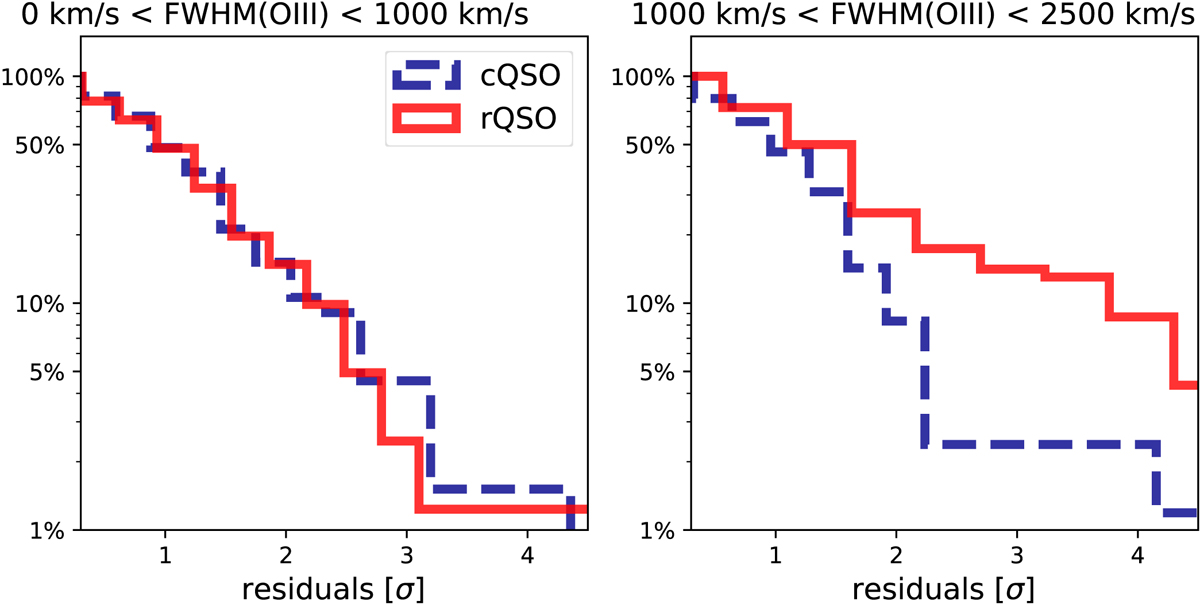Fig. 14.

Cumulative distributions of the infrared residuals defined in Fig. 9 for the red and control QSO samples, split into two bins of low-velocity (left panel) and high-velocity [O III] wings (right panel). A clear predominance of residuals can be recognised for red QSOs as compared to control QSOs in the right panel, whereas this difference disappears in the left panel. This result supports the scenario where high-velocity winds, which are more prevalent in red QSO, are the main transport of obscuring medium in the QSO line of sight, producing the hot dust reprocessed emission and the colours of red QSOs.
Current usage metrics show cumulative count of Article Views (full-text article views including HTML views, PDF and ePub downloads, according to the available data) and Abstracts Views on Vision4Press platform.
Data correspond to usage on the plateform after 2015. The current usage metrics is available 48-96 hours after online publication and is updated daily on week days.
Initial download of the metrics may take a while.


